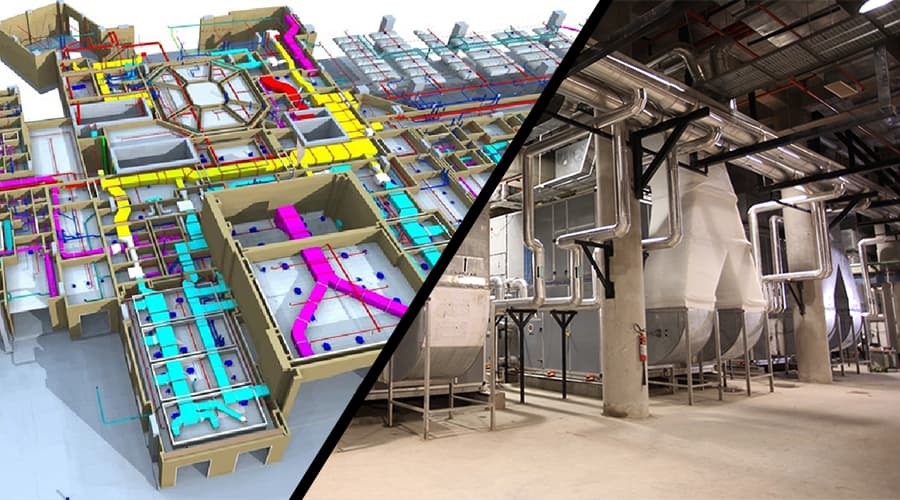
Functional Building Systems the Role of MEP Design
December 15, 2023In the cacophony of brick, steel, concrete, and glass that comprise our modern cities, it’s easy to overlook the vital role that functional building systems play in making these structures habitable. Behind every towering skyscraper or humble family home is a trio of magic elements that make them coming-using and sustainable – Mechanical, Electrical, and Plumbing (MEP) services. The role of MEP design services in delivering such user-friendly environments is profound, impacting not only building occupant comfort but also energy efficiency and the long-term sustainability of the built environment. Let’s delve deeper into this intriguing topic.
Pillars of MEP: A Snapshot
The building systems encompassed by MEP services are the backbone of comfortable, efficient, and safe building operation. These invisible networks route energy, water, and air throughout buildings, creating a beneficial internal environment for occupants.
The Mechanical Element
The mechanical systems in a building provide heating, ventilation, and air conditioning (HVAC), which facilitate controlled thermal comfort, indoor air quality, and energy efficiency. The mechanical element also accounts for elevators, escalators, and other means of specialty transportation within large commercial or residential buildings.
The Electrical Component
Electrical systems incorporated into MEP services provide lighting, power, and control systems. They not only light up spaces and power essential appliances but also facilitate automation, security, and communications, which significantly enhance living and working conditions.
The Plumbing Aspect
Plumbing services are essential for sanitary systems, including the distribution of potable water and the removal of wastewater. These systems also incorporate rainwater harvesting, greywater recycling, and other advanced water management techniques to promote building sustainability.
Holistic Approach to Building Design
MEP systems are traditionally designed independently, leading to inefficiencies and conflicts that result in time overruns, increased costs, and decreased performance. However, integrated MEP design services have introduced a collaborative approach that promotes synergy between the three disciplines, creating efficient, robust, and flexible building services.
Interdisciplinary Collaboration
In an integrated approach to MEP design, mutual understanding and communication among all stakeholders facilitate the creation of structures that meet the requirements of all users. This collaborative strategy ensures that any issues are addressed early, reducing the need for expensive on-site alterations.
Sustainable Design
Integrated MEP design solutions embrace a more sustainable approach, promoting innovative energy-saving techniques that minimize the environmental impact. This shift towards greener strategies not only supports the cause of sustainability but also results in significant cost savings over the building’s life cycle.
Adaptable Solutions
An integrated approach to MEP design also promotes flexibility and adaptability in building services. This adaptability allows building facilities to adjust to changing demands with minimal intervention, thereby offering considerable potential for cost savings, improved occupant comfort, and reduced energy consumption.
As we approach the futuristic reality of smart cities, it’s evident that the emphasis on efficient and resilient buildings will escalate. The role of cad design services will be pivotal in transforming the built environment into sustainable liveable spaces.
Revitalizing the Role of MEP Services in Building Economics
In this increasingly global economy, the cost efficiency and functionality of buildings can make or break the competitive edge of businesses. Here, the value of MEP services again comes to the forefront. By ensuring seamless integration and operational efficiency of all building systems, MEP designs can drastically cut down on overhead costs in the long run. Furthermore, they can help enterprises meet increasingly stringent regulatory requirements for energy efficiency and environmental impact, which can translate into both financial and PR advantages. It’s clear that businesses equipped with smoothly functioning MEP systems have a significant leg up in today’s competitive market landscape.
The Conclusion
The complexity and integration of modern buildings necessitate a comprehensive understanding of the fundamentals behind MEP services. By providing a collaborative platform for mechanical, electrical, and plumbing systems, MEP designs play a vital role in creating energy-efficient, sustainable, and comfortable environments. As the real estate landscape evolves and sustainability becomes a core focus, it’s clear that MEP design significance will only continue to grow. Building owners, operators, and inhabitants all reap the benefits of well-designed, well-coordinated MEP systems – from financial savings through efficiency to ultimate human comfort.

